Missile Technology - the weapon of destruction. [2nd chapter]
The word ‘missile’ is originated from a Latin word ‘mittere’ which means ‘to send’. In general, an object which is thrown to a specific target can be called as missile. So when you throw a stone to a bird or throw a ball at your dog, theoretically you are launching a missile. But the bird may notice your stone and possibly evade by changing its position which makes your missile a complete failure. To reduce the possibility of failure, you can simply teach your stone to follow the bird wherever it goes. Well, while you scratch your head wondering ‘how to train your STONE’, military technologists developed their way to follow the moving targets using ‘guided missiles’. The most advanced missile agencies use guided missiles in both defensive and striking operations.
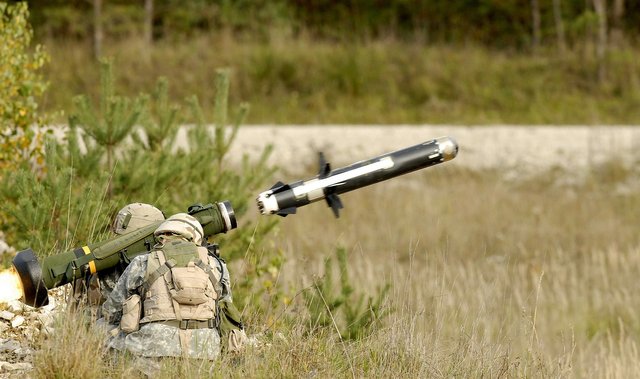
Missile operation, credit: Pixabay, license: CC0.
The first chapter of this series was about missile components and a brief discussion about Cruise Missiles. Let us dive into Ballistic Missile technology today.
Ballistic Missile
Ballistic Missiles (BMs) are a commonly used unmanned vehicle that carries a warhead to a specific target over a ballistic trajectory. BMs follows a predetermined course of flight and experience unpowered propulsion at the terminal stage of the flight. These missiles can carry a larger payload to conduct massive destruction. Most advanced ballistic missiles provides the flexibility to operate in longer range.
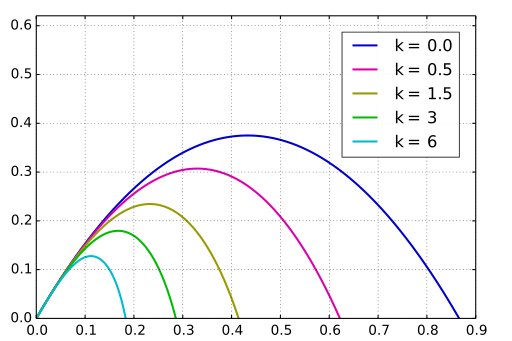 Figure 2: Sample ballistic trajectory, credit: Wikimedia Commons, author: Geek3, license: CC 3.0.
Figure 2: Sample ballistic trajectory, credit: Wikimedia Commons, author: Geek3, license: CC 3.0.A ballistic trajectory is a flight path of a projectile that is fired in a specific angle (not accurately 90 degree) to reach a certain midpoint and then propelled towards a target using the gravitational force. The mid-point of a ballistic trajectory is the highest peak of the flight from where object follows the predefined flight path and engage with the target. Sample ballistic trajectories are presented in Figure 2. Ballistic missiles follow this trajectory to operate effectively against targets in longer distance. Following this trajectory allows the BMs to maintain the unpowered flight during half of the flight path that in terms increase the operational range of the missile by a significant value. For this particular advantage, longer range missiles like Intercontinental Ballistic Missile (ICBM) operates using ballistic missile technology. Figure 3 represents the country-wise ballistic missile inventory.
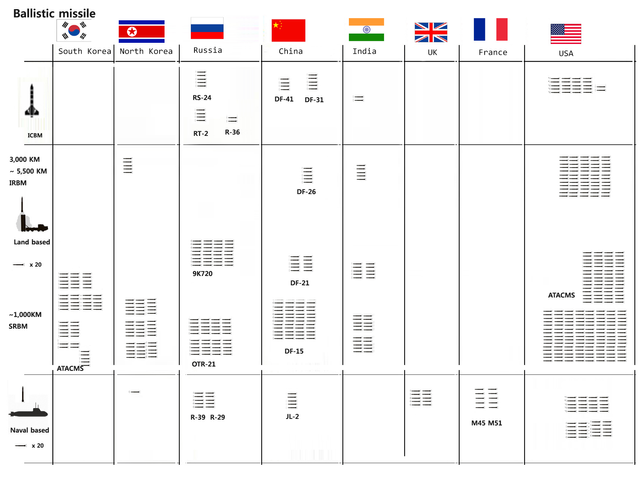
Figure 3: Country-wise ballistic missile inventory of 2018 (slightly modified version of the original Wikimedia image), credit: Wikimedia Commons, author: war2124 (author webpage currently unavailable), license: CC 3.0.
Missile Operation
Ballistic missiles delivers the payload to a specific target using a primary boost phase followed by an unpowered flight at the terminal stage. The core operational difference between a cruise missile and a ballistic missile is the terminal propulsion mechanism. A cruise missile is propelled with jet engines during the whole flight trajectory whereas ballistic missiles experience unpowered flight during the end-course period. A ballistic missile operation can be described as followed:
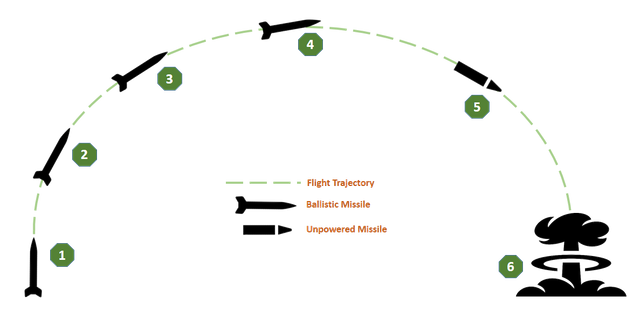
Figure 4: Ballistic missile operation, credit: author.

The missile is launched from the launching facility. At this stage, the missile is powered by the first stage boost engine. This engine generates the required thrust for the initial flight. The control & guidance system of the missile is also activated during this phase.

At 2nd stage, the first stage boost engine separates from the missile and the 2nd stage engine starts to propel the missile. 2nd stage of missile operation terminates while the 2nd engine burns out the whole fuel and separates from the missile.

This phase begins just after the separation of 2nd stage engine. The final jet engine ignites and the guidance system of the missile helps it to propel towards the mid-point of the ballistic trajectory. For most of the long range ballistic missiles, the 3rd stage also includes hovering out of the earth’s atmospheric level.

The 4th stage is about reaching the mid-point of trajectory and then initiating the flight back towards the atmosphere. The final jet engine separates from the missile after reaching the mid-point. The missile then starts to follow the predetermined flight path without any thrust generators.

This stage of missile operation is about re-entering the earth’s atmosphere. The unpowered ballistic missile then only carry the warhead that contains the payload. Some long range missiles carries a secondary control mechanism that helps to track and engage with the target precisely. Small thrusters are often attached along with the warhead to increase the accuracy of the engagement.

The missile finally engage with the target and explode. The explosion radius and the aftermath depends on the payload and their types. Nuclear warheads creates massive hazard while biological and chemical warheads does lethal damage to the target area.
Missile Classification
Ballistic missiles are mostly used in long range operation. The categorization of ballistic missile is also dependent on the operational range of the missile. Different military agencies use different standards to classify ballistic missiles. The US standard categorization of ballistic missile is discussed here:
Short Range Ballistic Missile
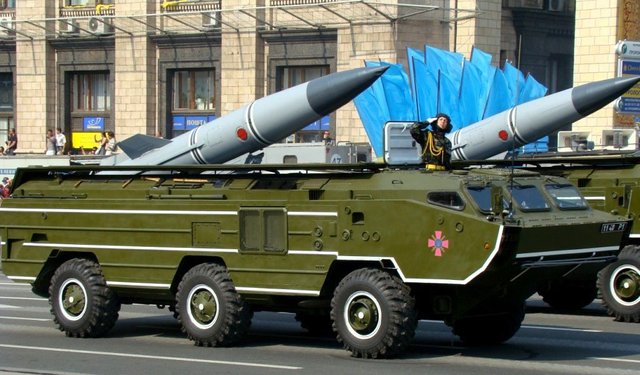 Figure 5: Russian SRBM 'OTR-21 Tochka', credit: Wikimedia Commons, author: Віталій (author webpage currently unavailable), license: CC 3.0.
Figure 5: Russian SRBM 'OTR-21 Tochka', credit: Wikimedia Commons, author: Віталій (author webpage currently unavailable), license: CC 3.0.Missile with the operational range about 1000 kilometers or lesser than that are classified as short range ballistic missiles (SRBMs). For quick and short ranged operations, SRBMs are well favored by the military agencies across the globe. Comparatively reduced fuel consumption with better speed provides SRBMs more flexibility than cruise missiles. SRMBs are mostly used to destroy enemy facilities from a safe distance in nearby camps. The US Army’s MGM Lance, Russian Iskander and Tochka are the examples of short range ballistic missiles.
Medium Range Ballistic Missile
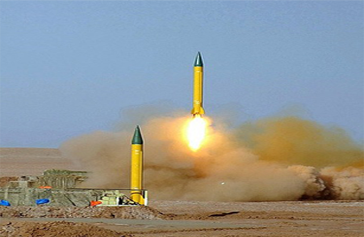 Figure 6: 'Shahab-3' MRBM of Iran, credit: Wikimedia Commons, author: Hossein Velayati (author webpage currently unavailable), license: CC 4.0.
Figure 6: 'Shahab-3' MRBM of Iran, credit: Wikimedia Commons, author: Hossein Velayati (author webpage currently unavailable), license: CC 4.0.Medium range ballistic missiles (MRBMs) have the operation range from 1000 kilometers to 3000 kilometers. These missiles are used in lethal operations in a warzone. The modern military agencies often categorize SRBMs & MRBMs into a broader class named Theatre ballistic missile (TBM). MRBMs are useful against a moving target within a medium range from the safe house. Iran, North Korea and Pakistan are the countries that mostly use MRBMs at present times.
Intermediate Range Ballistic Missile
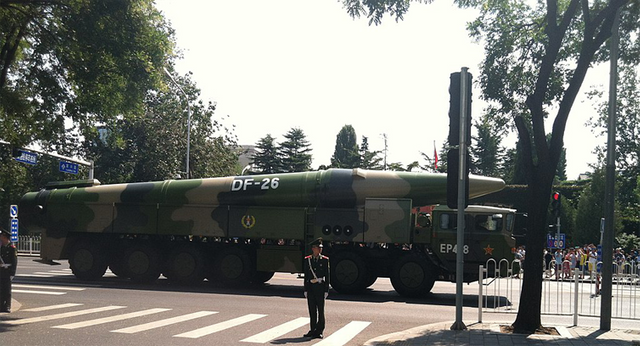 Figure 7: BF-26 missile of China, credit: Wikimedia Commons, author: IceUnshattered, license: CC 4.0.
Figure 7: BF-26 missile of China, credit: Wikimedia Commons, author: IceUnshattered, license: CC 4.0.Missiles having the operational range of 3000 to 5500 kilometers are classified as Intermediate Range Ballistic Missiles (IRBMs). The history of IRBMs dates back from the World War II while the German military used A4b rockets widely both in manned and unmanned air strike. China, India, North Korea still use the IRBMs while USA, France and UK no longer conducts IRBM operations.
Intercontinental Ballistic Missile
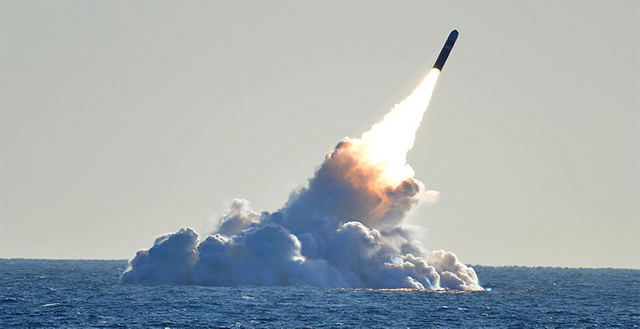 Figure 8: US Navy's Trident II ICBM launch from submarine, credit: Wikimedia Commons, author: National Museum of the U.S. Navy, license: public domain.
Figure 8: US Navy's Trident II ICBM launch from submarine, credit: Wikimedia Commons, author: National Museum of the U.S. Navy, license: public domain.
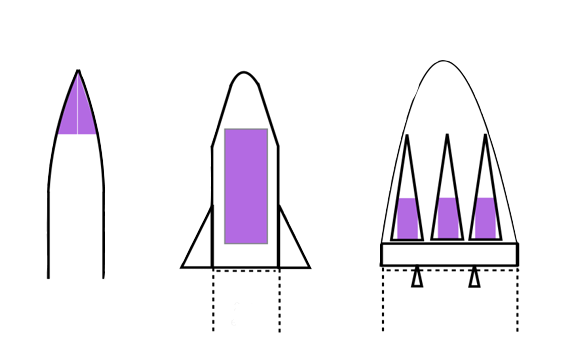 Figure 9: ICBM warhead categories (slightly modified version of original Wikimedia image), credit: Wikimedia Commons, author: Vega&Altair, license: CC 4.0.
Figure 9: ICBM warhead categories (slightly modified version of original Wikimedia image), credit: Wikimedia Commons, author: Vega&Altair, license: CC 4.0.Intercontinental Ballistic Missiles (ICBMs) are very long ranged self-propelled ballistic missiles. These missiles can engage a target with more than 10000 kilometer operational range. ICBMs are initially launched from ground based launching facilities and travels to the earth’s orbit into the outer space and then reenter the atmosphere with an enormous velocity. The minimum range of an ICBM is set to be 5500 kilometers and the maximum range varied from 7000 to 16000 kilometers. R-36M of Russia is currently the longest ranged missile in the world with an operational range of 16000 kilometers. ICBMs are capable of carrying larger payloads to a very long distance with comparatively improved accuracy. The warhead of an ICBM can carry multiple payloads as shown in the Figure 9.
By the time missile leaves the earth’s atmosphere and travel within the space, the maximum speed of the missile can reach almost 27,360 km/hr. Though countries can conduct ICBM operations over continents but till date no ICBMs were fired to engage with an enemy in wars across the globe. The video below shows the launch of US Navy's Trident II ICBM from a submarine in the Atlantic Ocean.
US Navy firing Trident II ICBM, credit: U.S. Navy youtube handle. license: CC (reuse allowed).
Again the Russian military classified ballistic missiles into five following categories.
| Missile Type | Range (km) |
| Tactical | up to 50 |
| Operational-Tactical | 50 to 300 |
| Operational | 300 to 500 |
| Operational-Strategic | 500 to 1000 |
| Strategic | over 1000 |
Conclusion
The longer operational range along with the improved speed make the ballistic missiles useful in war combats. The ballistic missiles are launched towards the highest layers of the atmosphere that allows them to travel a much longer distance compared to the cruise missiles. Additionally the terminal phase of the ballistic missiles are unpowered that allows it to operate almost half of its trajectory without any fuel consumption. These operational advantages make ballistic missiles one of the most used weapon of mass destruction by the military agencies all over the world. Moreover, ballistic missile defense system is introduced by the most advanced military agencies in recent times. The defense system intercepts with the incoming missile with a target seeking missile launched from ground based facilities. The defensive missile engage with the income threat in mid-air and cause the missile to explode before entering the earth’s atmosphere. More discussion about the missile defense system will be presented on further issues of this missile technology series. Make sure to keep an eye on this series of blog posts if you are interested in missile defense technology.
References
My sincere gratitude to @scienceangel for her help in mentoring this article.
If you are interested in science, technology and mathematical things on steem blockchain, consider joining the 'steemSTEM' community. More details about steemSTEM can be found here.
 gif credit: @foundation
gif credit: @foundation
How much consideration is taken in to account for atmospheric conditions over the course of a ballistic missiles flight path? I mean would not those conditions play at least a perceivable role in how far a missile could go, say it flew through a jet stream or not, would not that potentially high wind environment potentially slow down the missile?
Yes, the flight path is greatly influenced by the atmospheric conditions. Small thrusters are often used for secondary propulsion after re-entering the atmosphere. Actually the total operational range is not much affected by the condition of air as the accuracy of the attack does. So for most of the longer range ballistic missiles, there are thrusters and secondary guidance mechanism attached to hit the target precisely.
you article is good but you cannot mention Pakistan for Ballistic Missile technology list you can show this country list.I have a suggestion for you can search for Pakistan missile range and technology.
I can follow u.
@aryaan
Pakistan is actually developing several Medium Range Ballistic Missiles. I wrote that from wikipedia reference, u can check the wikipedia to get better idea about Pakistani ballistic missiles.
Thanks for ur compliments btw. :)
Oww, great informative post indeed, I learned a lot about messile from your post. good job borther @ied , carry on
Thanks a lot for ur compliment bro. :)
I am very new in steemit. I need your support to build up my steemit account. If possible, please something doing positive for my poast.
Thanks again 💜
We all are here to support each other and bringing more values to this platform!
Feel free to knock me on discord bro, if u need. U can find me on steemSTEM server '@ied#8554' .
What an inspiring post! Amazing information. Well deserved upvote.
thanks a lot for ur support! :)
Hi @ied!
Your post was upvoted by utopian.io in cooperation with steemstem - supporting knowledge, innovation and technological advancement on the Steem Blockchain.
Contribute to Open Source with utopian.io
Learn how to contribute on our website and join the new open source economy.
Want to chat? Join the Utopian Community on Discord https://discord.gg/h52nFrV
This post has been voted on by the steemstem curation team and voting trail.
There is more to SteemSTEM than just writing posts, check here for some more tips on being a community member. You can also join our discord here to get to know the rest of the community!
Congratulations @ied! You received a personal award!
You can view your badges on your Steem Board and compare to others on the Steem Ranking
Vote for @Steemitboard as a witness to get one more award and increased upvotes!
Congratulations @ied! You have completed the following achievement on Steemit and have been rewarded with new badge(s) :
Click on the badge to view your Board of Honor.
If you no longer want to receive notifications, reply to this comment with the word
STOPYour writing skill is very good and informative. go ahead brother!
just amazing!!
Congratulations @ied! You have completed the following achievement on the Steem blockchain and have been rewarded with new badge(s) :
Click on the badge to view your Board of Honor.
If you no longer want to receive notifications, reply to this comment with the word
STOPDo not miss the last post from @steemitboard: